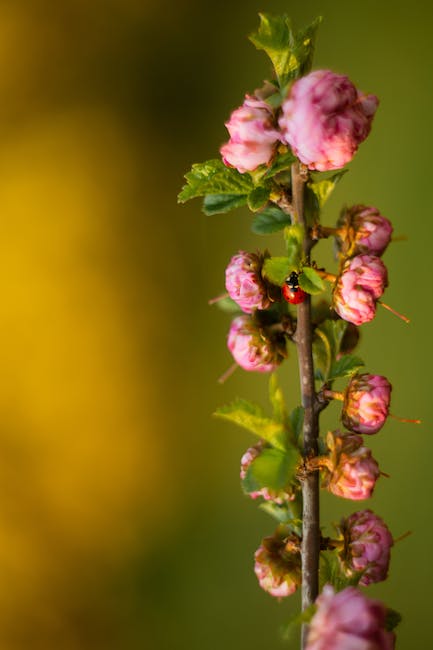As the days get warmer, red and black ladybugs seem to take over homes. This can be a nuisance, but it is also a sign of spring and warmer days. Ladybugs are a beneficial species that performs a much-needed role in the environment. Read on to learn more about why ladybugs take over your home each spring and how to manage them safely.
Different Species of Ladybugs
A variety of species of ladybugs exist, which can be exciting and a bit confusing. The most commonly seen species is the convergent lady beetle, which is the large, bright red insect with black spots. Other ladybugs may be more cream-colored and smaller than the convergent lady beetle.
Identifying Ladybugs
If you want to identify which type of ladybug has taken over your home, start by looking at the colors. The convergent lady beetle is bright red with a small number of black spots while other species may be yellow, pink or cream-colored. The convergent lady beetle has a distinct M-shaped pattern on its head, while other species may have more than one spot on their head.
Life Cycle of Ladybugs
The life cycle of ladybugs is one of the reasons why they become so numerous in the springtime. The life cycle begins in the winter when they enter a state of dormancy and look for a warm, dry place to stay. In spring, they emerge from dormancy and begin feeding and breeding, sometimes making their way into your home.
Eating Habits of Ladybugs
Ladybugs are beneficial because they are voracious eaters. They typically feed on aphids, small insects, and other small insects that can damage crops. Ladybugs also feed on pollen, nectar, and plant juices, which can help fertilize plants in the environment.
Managing Ladybugs
In the springtime, ladybugs can become a nuisance but there are a few ways to manage them in your home. Keeping food and water sources away can help discourage them from entering your home. You can also contact a pest control professional to properly identify and eradicate the ladybugs in your home.
People Also Ask
What do ladybugs eat?
Ladybugs typically feed on pollen, nectar, aphids, small insects, and other small insects that can damage crops.
What is the life cycle of a ladybug?
The life cycle of ladybugs begins in the winter when they enter a state of dormancy, look for a warm, dry place to stay and then emerge from dormancy in the springtime. They then begin feeding and breeding and sometimes make their way into your home.
Are ladybugs beneficial?
Yes, ladybugs are beneficial because they are voracious eaters and feed on aphids and other insects that can damage crops. They can also help fertilize plants in the environment through their consumption of pollen, nectar, and plant juices.
Do ladybugs bite?
No, ladybugs do not bite humans. While they do not have a true “bite”, they may pinch if handled too roughly.
Can ladybugs make your house smell?
Ladybugs do not typically make your house smell, but in large numbers they may leave an odor.
Final Words
Ladybugs seem to take over homes each spring, but with some understanding and proper management, you can keep your home free from a ladybug infestation. Ladybugs are beneficial species and perform a much-needed role in the environment, so it is important to keep them in check but also treat them humanely.

